Cape Town is a city that joins only a few others in being so immediately recognizable, with its iconic Table Mountain looming like a protective barrier from the Gods at the southern tip of the world.
I had long wanted to visit South Africa and was eager to jump in, starting my trip to Cape Town. As I got off the plane from Europe, I was immediately delighted with the sunny weather — after all, the season here is exactly opposite to our northern winter. As the first summer rays hit my face, I felt like when Wall-E opened his little solar panel wings. Ahhh.

On my way from the airport, it wasn’t hard to notice that South Africa is a country of contrasts. I passed lush green luxury golf courses as well as dense jungles of corrugated metal in the shantytowns. South Africa can wildly oscillate between feeling totally European and decidedly African—though my taxi driver, who was originally from Cameroon, warned me not to expect the ‘real Africa’ here. “You’ll find no lions and people living in huts in South Africa, my friend,” he said.
He was actually wrong on both counts — I later saw my share of lions and plenty of huts on the Wild Coast — but I get the point he was trying to make. There are definitely no lions in Cape Town, but there were plenty of other interesting things to see and do, as well as numerous day trips you can do starting from Cape Town.
Staying in Observatory
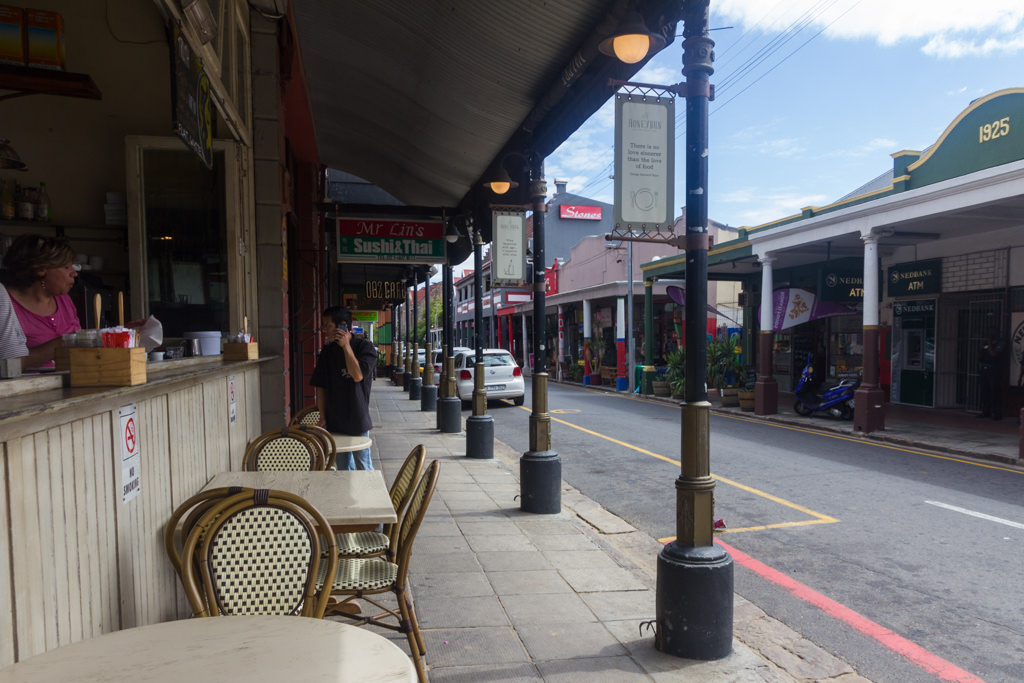
The main street in Observatory
I decided not to be in downtown Cape Town but in Observatory (a.k.a. Obvs), a peachy and mildly gentrified neighborhood set around a two-block stretch of hip cafes, restaurants, used bookstores, and art galleries. Having heard so much about crime in South Africa (and having inevitably been befallen by some pre-trip paranoia), it was lovely to arrive in such a welcoming and stress-free place.
I’m going out on a limb here and saying Observatory is very safe, as during the day people were sitting outside sipping coffee with their Macbooks out in the open, and there’s a happy buzz of activity even at night. While it takes a 10 to 15-minute ride to get to the center, I would happily recommend Observatory as your base in Cape Town.
I stayed at 33 South Boutique Backpackers, a premium hostel with comfy beds and two lovely gardens. Don’t miss their Friday braai (BBQ)!
Penguins & Muizenberg beach
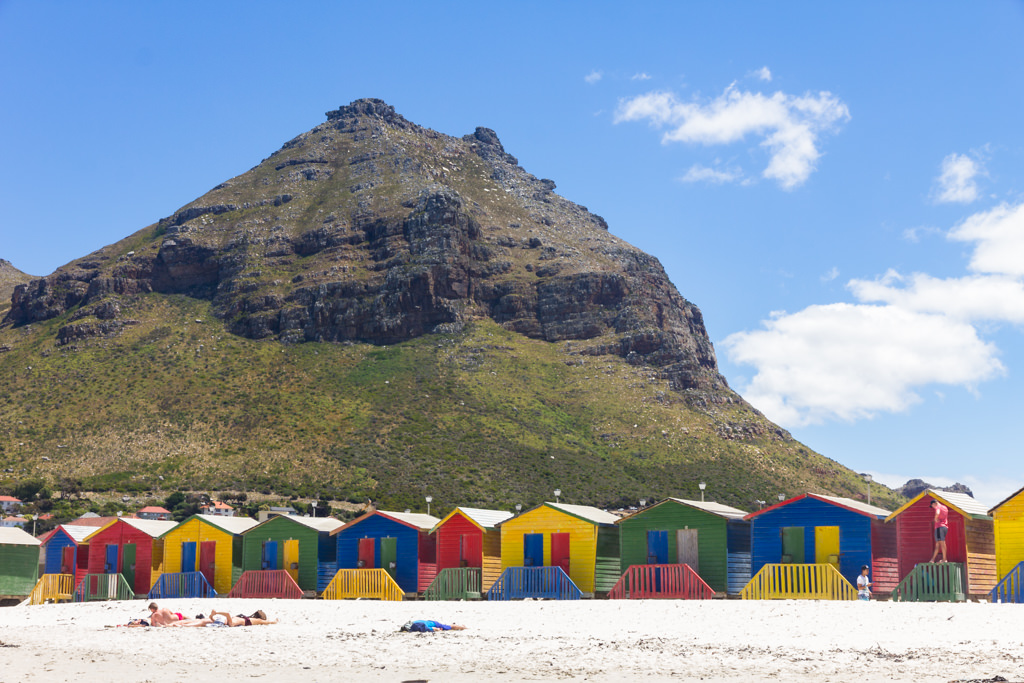
Eager to explore, I ignored the city itself for the moment and dove right in with a day trip to the Cape Peninsula. It’s here that I was confronted with what would become my constant nemesis during my South Africa trip: its horrendous public transportation.
To get to Muizenberg beach would have taken 30 minutes by car but took me over 2 hours by train. To a patient traveler that’s perhaps not the end of the world, but that still took four hours out of my day. Once I eventually got to the beach, it was challenging to get to other nearby places like Simon’s Town without a car, further slowing things down.
If you’re trying to get around without having your own car, then you might have to rely on ride-sharing apps like Uber a lot, though this isn’t cheap. It seems the best way to get around is to have a rental car or go on an organized tour.
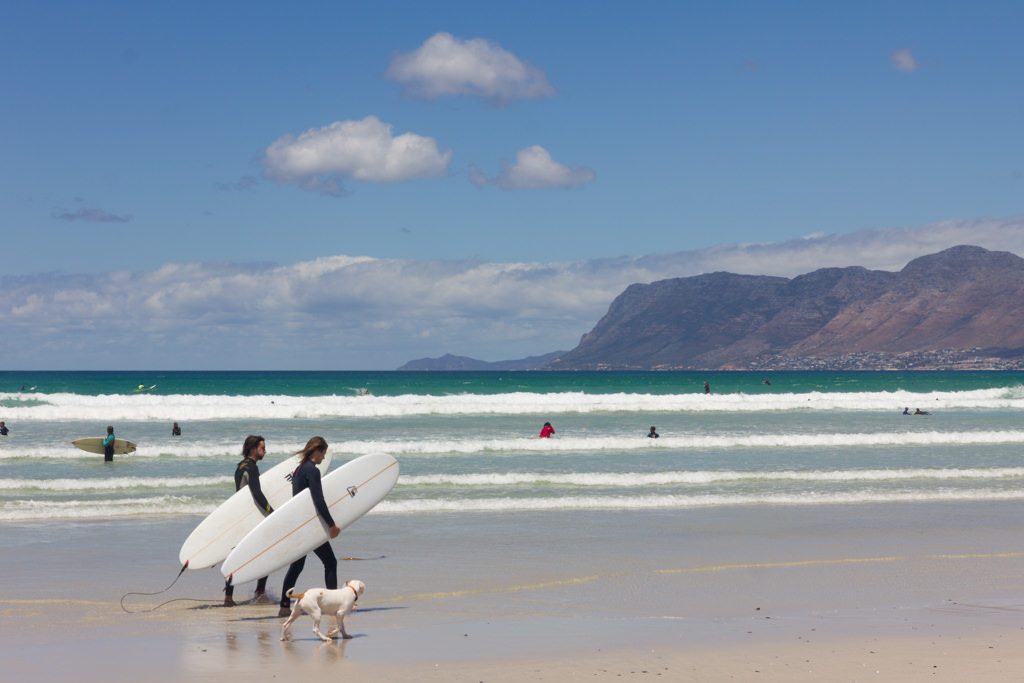
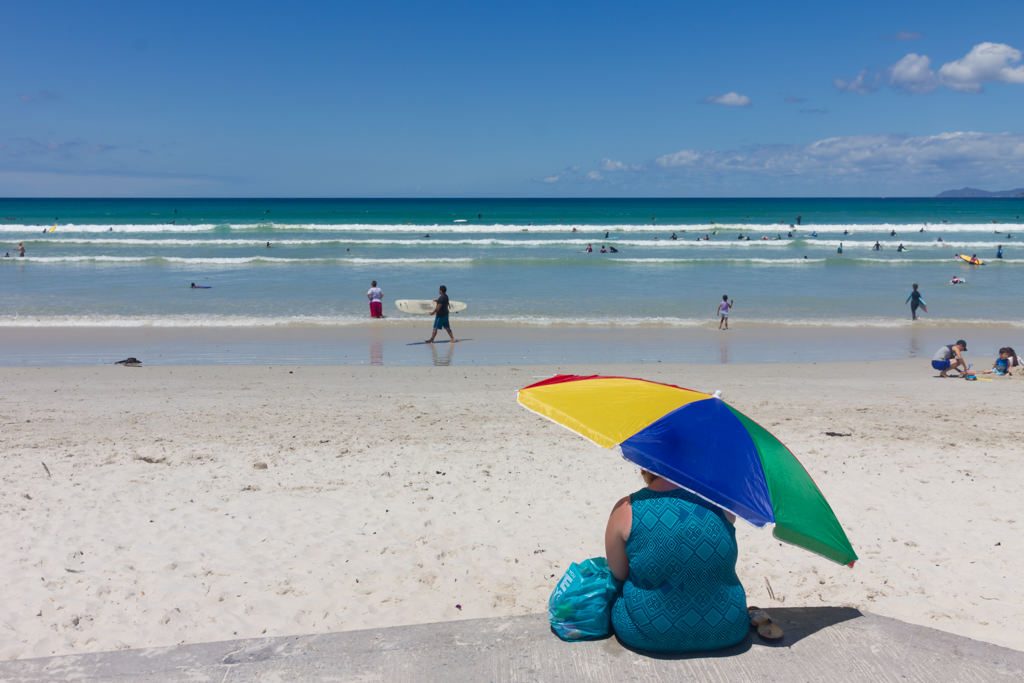
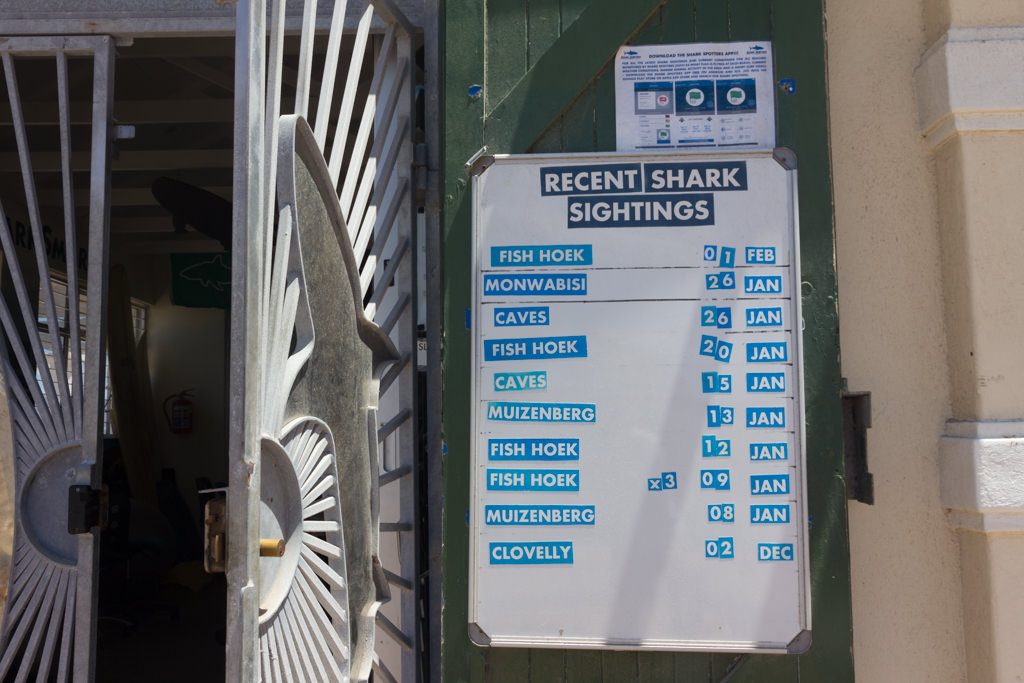
But I digress. Muizenberg has a fantastic beach with views of the southern peninsula’s mountain peaks. The beach is hugely popular with surfers and is also known for its colorful beach houses. I had a great time hanging out here, and while it’s by no means a tropical beach, the water temperature was great for a summer swim. When you’re done lazing on the beach you can find many nearby trails leading up to the Muizenberg mountains, though I opted for some more sightseeing instead.
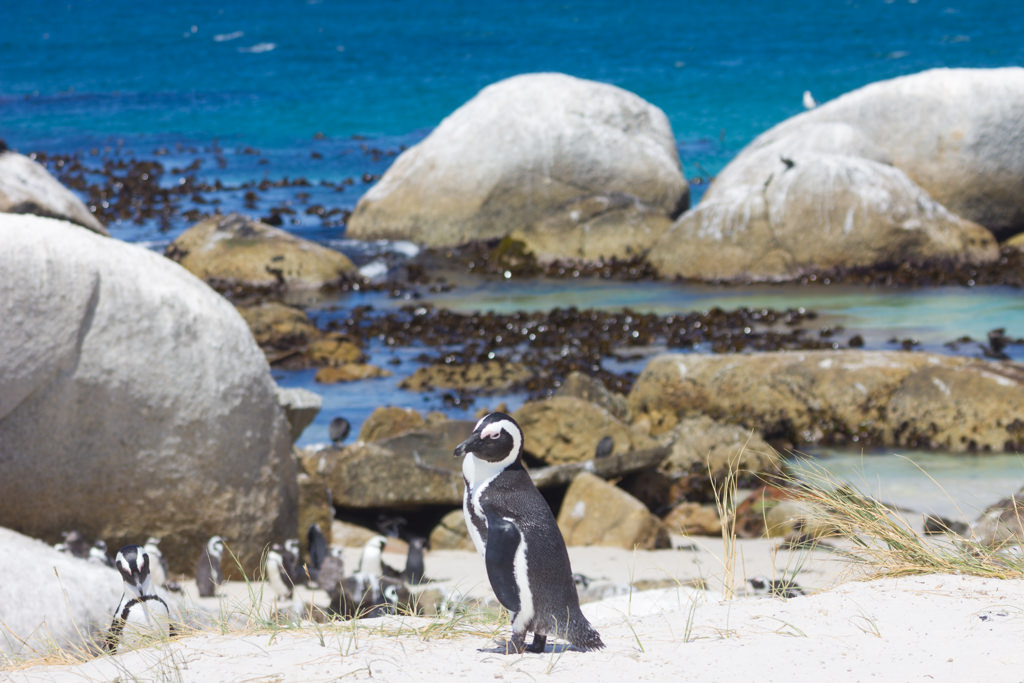
Passing by Fish Hoek I went further south to Simon’s Town, a beachside town with a small historical colonial-era center as well as various museums about its history as a naval base. A colony of African Penguins lives at Boulder’s Beach, which eventually became a tourist attraction with viewing platforms and an information center. It was fun to see the penguins waddle around the beach, particularly in such a warm climate that you might not normally associate with penguins (even though the majority of penguins don’t live anywhere near Antarctica).
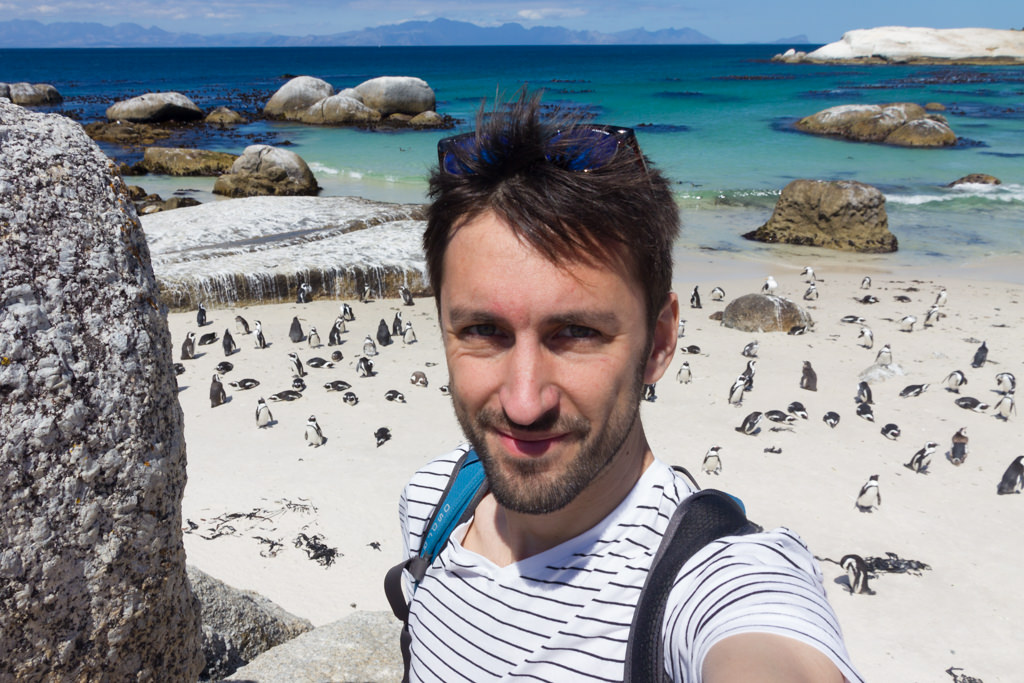
Obligatory penguin selfie
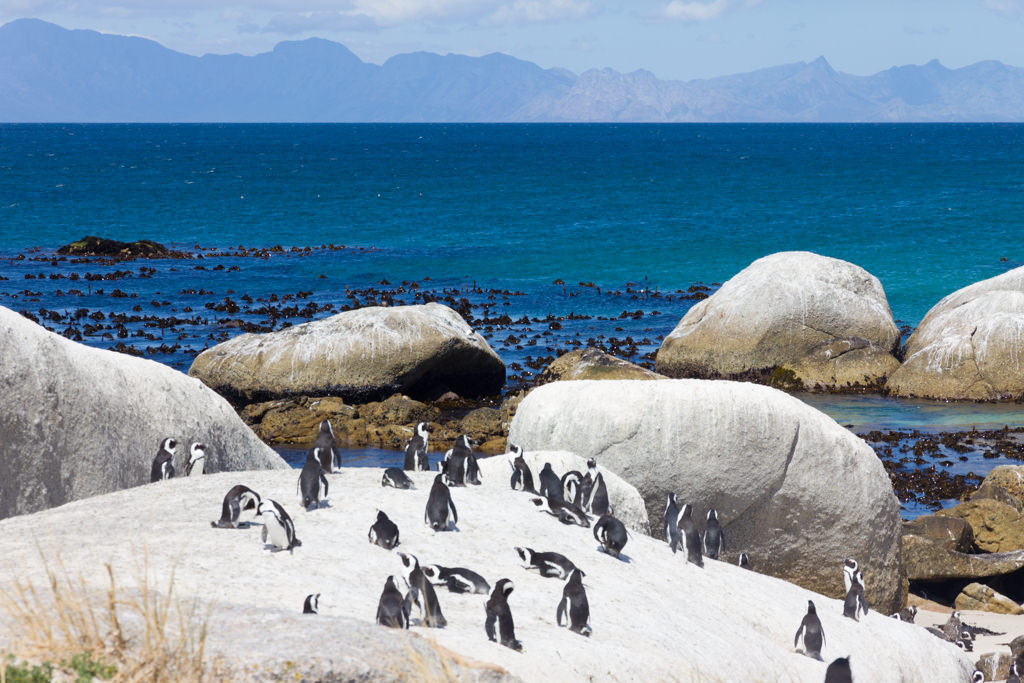
Later that day, my train ride back to Observatory was again very slow, but much more fun than my morning ride had been. I got a 2nd class ticket, which put me in a super fun and rowdy carriage. A few people in the back were playing bongos and dancing around. I sat opposite two women speaking Xhosa, which is the language that uses clicking sounds—I had never seen anyone speak this language before, so it was a little fascinating to me.
A man then got on board yelling PEPPAS PEPPAS while pulling along two shopping carts filled to the brim with red and green peppers, which he then secured with ropes to the metal bars of the luggage racks above. Some people gave him a lot of (good-natured) shit for having set up this improvised shopping stall right in the middle of a crowded train and demanded to see his business license. There was a good 20 minutes of hilarious back and forth between the crowd and this crazy pepper salesman, with supposed threats of getting lawyers involved and the salesman responding by disqualifying certain people from buying any of his delicious peppers. It all made for some great people-watching.
Colorful Bo-Kaap
Kicking off the last of my 3 days in Cape Town, I focused at first on the downtown area. Unfortunately, on a Sunday it seemed absolutely deserted, so I ended up wasting a bit of time wandering around and not encountering much interest.
I had a little pitstop at Zebra Crossing Hostel, where another traveler had to do a quick check-in. This hostel seemed like a great place to stay that’s closer to the center, with dorms and private rooms around a quiet leafy courtyard.
I went onwards to the neighborhood of Bo-Kaap, traditionally the Malay Muslim area of Cape Town, which has a long history going back to colonial times and as well as spanning the apartheid years, during which it was a township. Today, it’s simply a charming part of the city full of colorfully painted terraced houses. The Bo-Kaap Museum was unfortunately closed, so I could only get some context from my travel guide. While you can have a nice wander by yourself, I would recommend going on a free walking tour to get the most out of visiting this area.
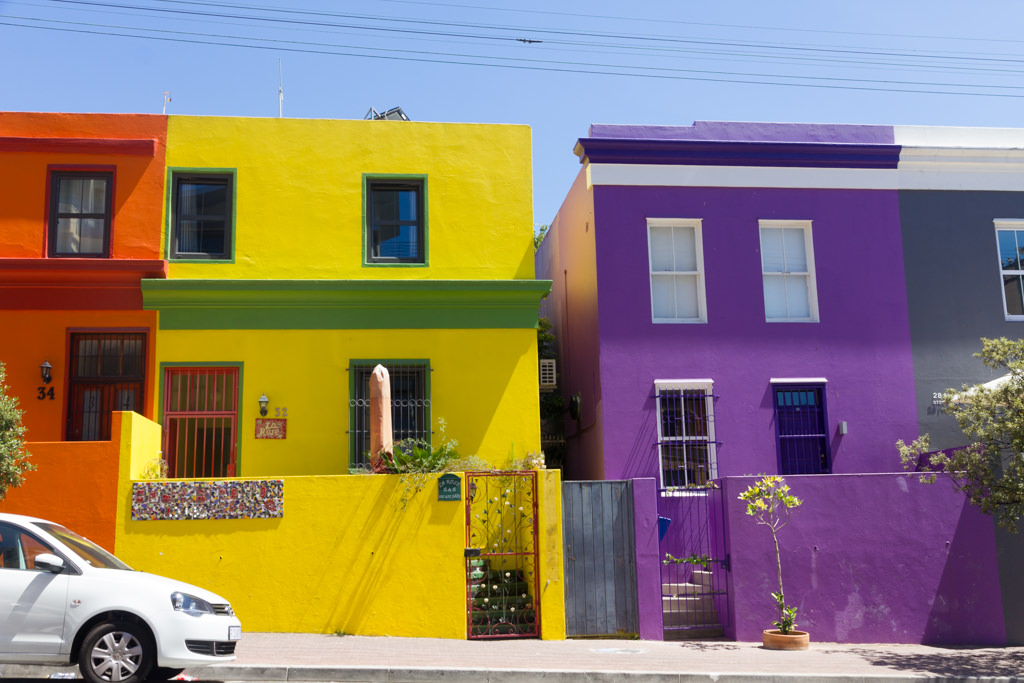

Since I’m from the Netherlands, it was fascinating for me to see the Afrikaans language (which closely resembles Dutch) and other signs of colonial history. Many street names in Bo-Kaap and around are identical to streets or neighborhoods in Amsterdam, for example. Afrikaans often reads like an odd ye olde version of Dutch, with the basic vocabulary pretty much identical but the grammar and spelling differing wildly.
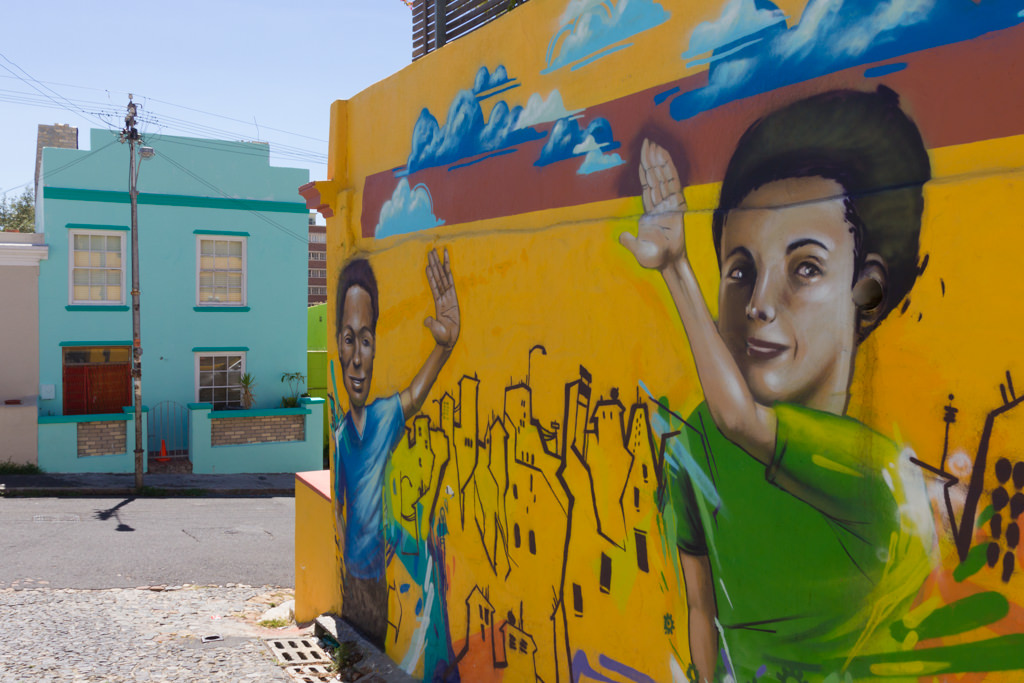
The main street in Bo-Kaap (Wale St) gets a little silly, as busloads of tourists jockey for positions to photograph the row of houses here. But head into any of the other streets and you’ll be able to explore in peace. Afterward, you can grab a mean Malay curry at one of the local restaurants.
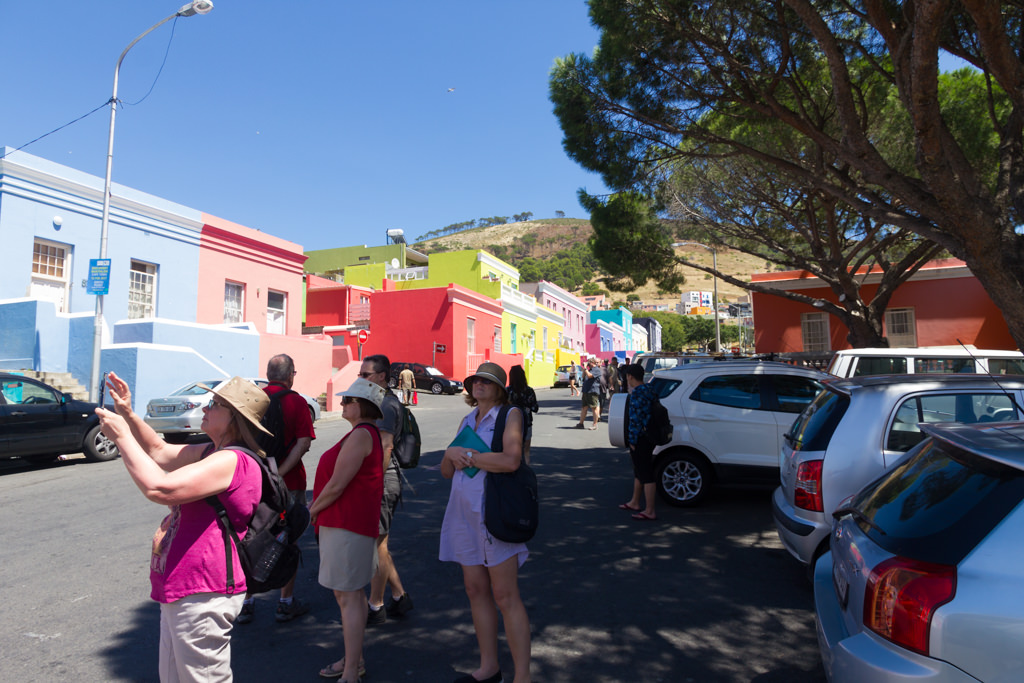
V&A Waterfront
Okay, I’m not sure why seemingly every travel blogger is raving about the V&A Waterfront. This part of town is utterly generic and I think you don’t need to feel bad about skipping it—at least if it doesn’t seem to immediately appeal to you.
The V&A Waterfront is essentially one large commercial development that’s more or less separated from the rest of the city (and therefore very safe even at night). Its location next to the marina is nice I suppose, and the Table Mountain makes for a cool occasional backdrop, but there is nothing particularly unique about this place. It feels totally commercial; basically just a collection of promenades surrounded by hotels and shopping centers. When you see the Ferris wheel in the background, you might even feel faint like you’re in Main Street at a theme park.
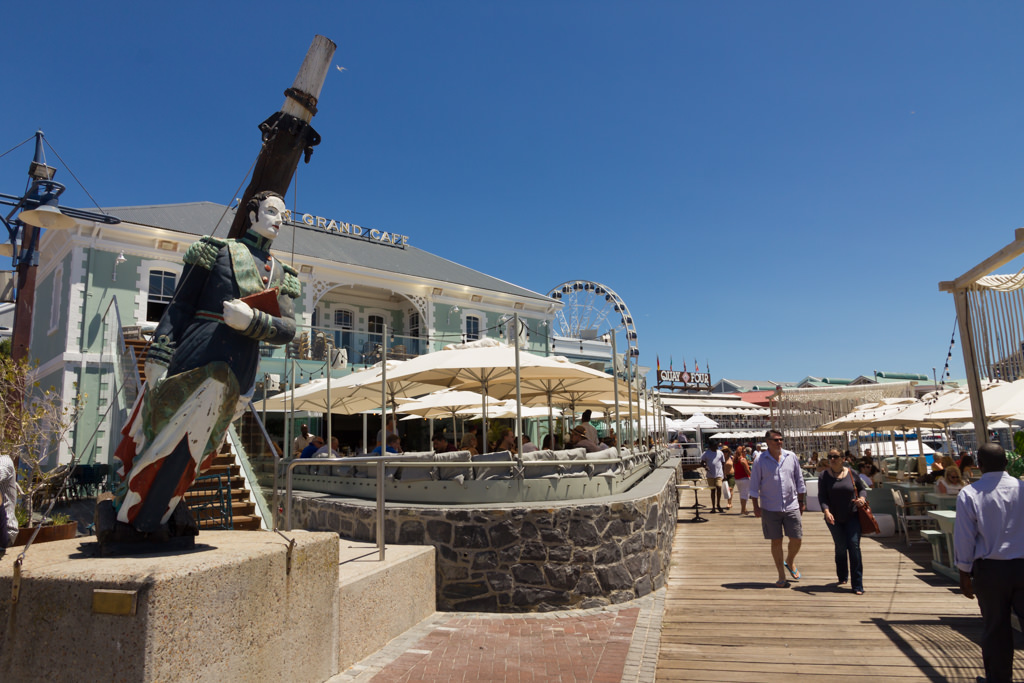
I may not have been to this particular place before, but I have been to so many places just like it (especially in the US). If I was a Cape Town resident I might be very happy to hang out here on the weekends, but as a tourist, I think you might have other priorities first. I don’t know, maybe it’s just not my thing.
Actually, to be fair, the Waterfront food market is pretty awesome. You’ll find lots of great food here, including some typically South African dishes. Also, unlike other parts of the city, the V&A is very much abuzz on a Sunday, so it’s not a terrible place to be if you have nothing else to do.
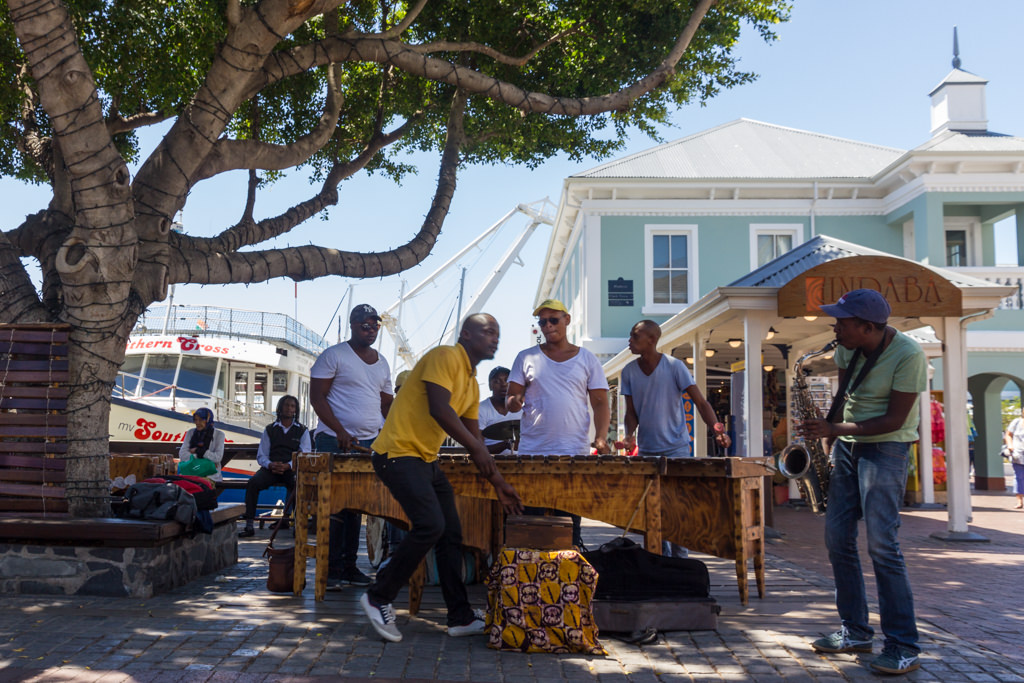
Table Mountain
Ascending Table Mountain is, needless to say, one of those things you definitely will want to do in Cape Town. There are many hiking trails leading up the mountain, though if you want to get there quicker, the cable car can also take you there.
The mountaintop will give you great views of the city, with the harbor, Lions Head, and Robben Island in the distance. On the opposite side, you’ll get a superb view of the twelve apostles mountain range on the Cape Peninsula.
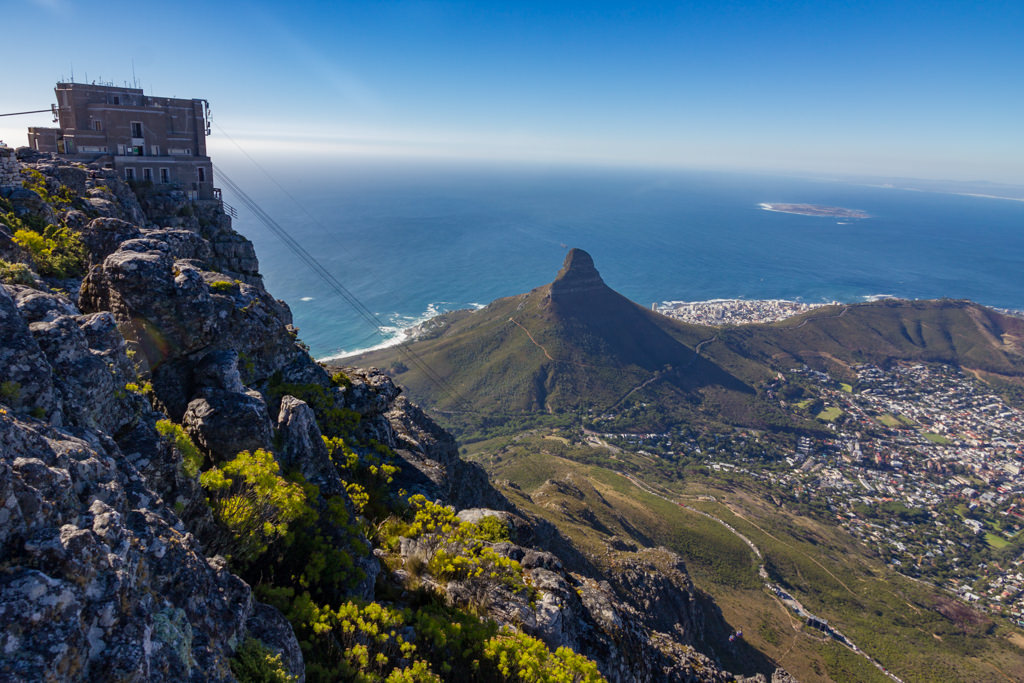
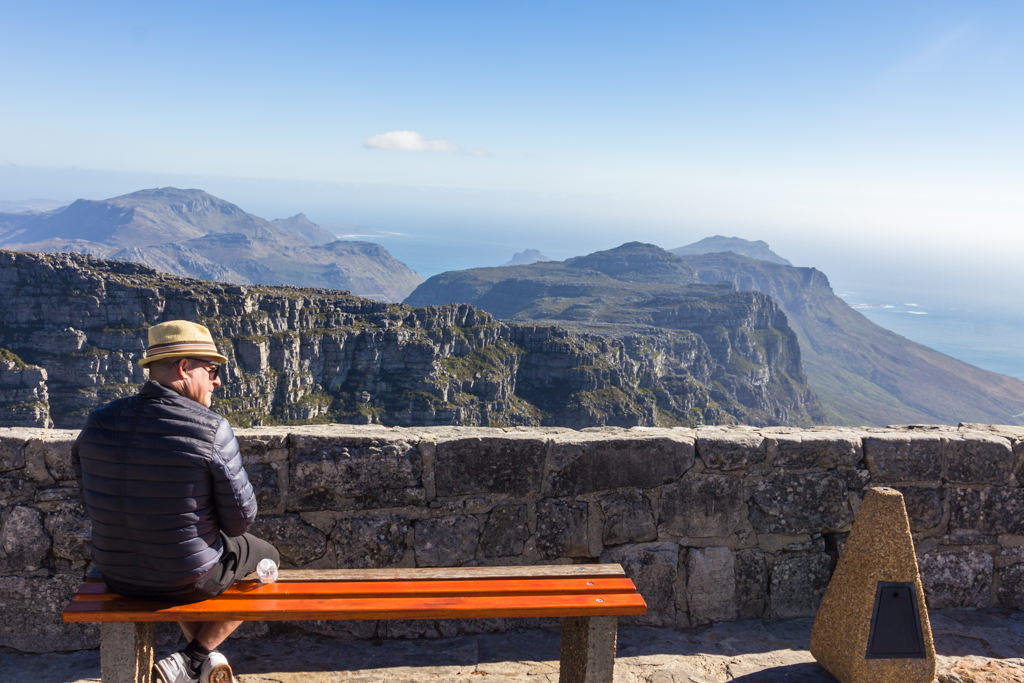
I spent a couple of hours walking the trails here. One thing that surprised me is that, despite being on top of a mountain, the landscape sometimes felt a bit like a swamp! Reed-like plants grow in certain areas, and wooden planks cover little patches of wetland. Apparently, the clouds get stuck on this side of the mountain leaving a lot of moisture—and these clouds are so common they’re popularly referred to as Table Mountain’s “tablecloth”.

The weather can be very changeable on Table Mountain, with dense mist and cold weather sometimes descending without warning. I experienced this myself, as suddenly a deafening weather alarm went off, sounding very similar to an air raid siren. This signal meant that everyone had to make their way to the cable car station, as high winds were coming soon. Within minutes I saw clouds moving in over the previously spotless sky. For about 10 seconds I felt a gust of hot air blowing past, followed immediately by super cold air. The winds then got fast enough to knock me a little off-balance.
I didn’t want to miss my chance to take one of the last cable cars down, so there was nothing for me to do but queue. I would have liked to go to the lower Lions Head peak from which you can get a great sunset view of Table Mountain, but alas, the cable cars proceeded to operate only at half capacity due to the winds, and it was too late for me to make it.
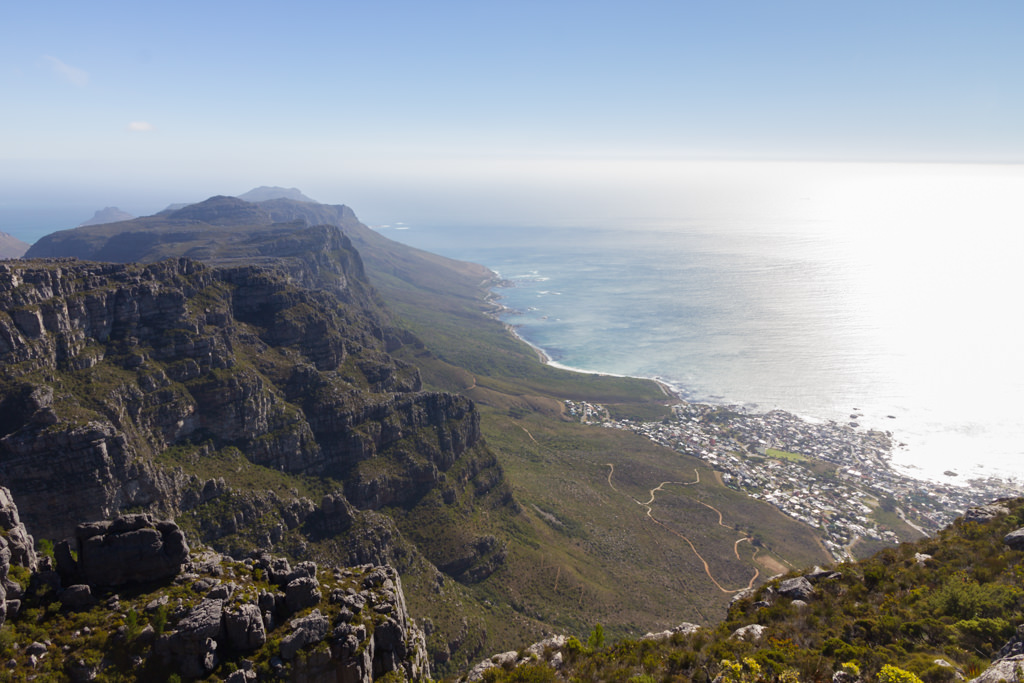
What I would have done differently
I loved Cape Town but it was honestly difficult for me to get the most out of this city. I had a lot of stop-and-start situations and had to learn how to navigate them properly. In hindsight, I would have done a few things differently.
- Rely more on tours. For instance, by getting a free walking tour around Bo-Kaap and downtown for more historical insight, or an organized day tour of the Cape Peninsula. This goes against my instinct of wanting to do things independently, but it would have been a far more efficient use of my time.
- Skipping the V&A Waterfront. Some locals told me to check out the hip Woodstock area instead but I totally ran out of time.
- Spending some time in Camps Bay or the wine lands around Stellenbosch.
It felt like a few things in Cape Town slipped through my fingers either due to time wasted or a lack of planning. If you’re not by car, it’s worth planning your itinerary a little more than you might in other parts of the world.
For more impressions of South Africa, check out my posts on the Wild Coast and Wilderness.
Traveling soon? Don't forget anything with my pre-travel checklist and avoid packing headaches with my expert packing tips.
Some links may be affiliate links, meaning I may earn commission from products or services I recommend.
Comments
Post a Comment